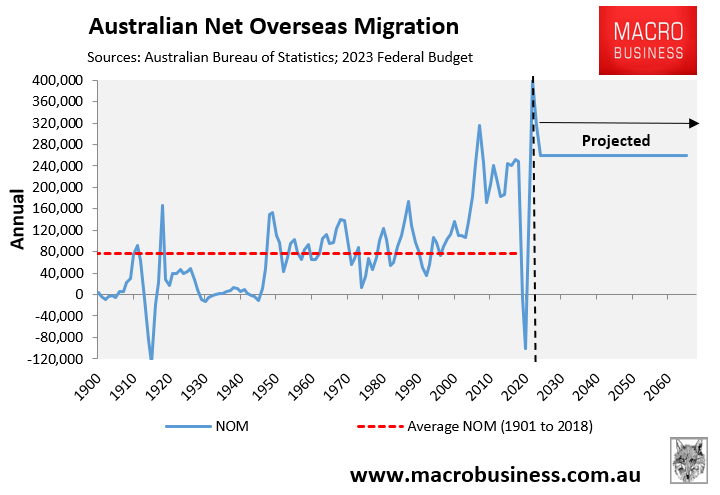SQM Research has released rental data for July, which shows that the nation’s vacancy rate remained at just 1.3%:

Source: SQM Research
Meanwhile, capital city asking rents rose by 1.2% with the 12-month rise standing at 18.5%:

Source: SQM Research
Capital City house rents rose by 1.4% and are recording 12-month increases of 16.4%, while unit rents have risen by 1.0% for the past 30 days and are higher by 20.9% for the past 12 months.
Commenting on the results, SQM Research managing director, Louis Christopher, has urged the Albanese Government to cut immigration into Australia to ease the rental crisis:
“After the slight easing in vacancies over the first half 2023, this is somewhat of a disappointing result for tenants. Clearly, acute rental shortages remain with us. And besides more people grouping together to share the burden, there is no significant solution on the horizon”.
“I encourage discussion about temporary migration caps, rather than rental caps, which will only make the rental crisis worse over the medium term”.
“This problem has not been instigated by so called, greedy landlords. Rather, it has been driven by rampant population growth”.
“Australia currently has, by far, the fastest growing population for any OECD country and clearly the rampant increases are currently breaching the country’s capacity to house all our people”.
REA Group Economist Anne Flaherty likewise noted in an interview with Sky News that record immigration is the “big story” in relation to Australia’s housing market:
“We know that population growth is at close to record levels at the moment. We have a lot of new migrants coming to the country. At the same time we’ve seen the speed at which new homes are being developed has slowed”.
“On realestate.com.au we’ve seen really really significant growth in searches both to buy and rent Aussie property”.
“Predominantly when people move to Australia, they are renters. So, around 70% of new migrants into Australia are typically renters. That percentage is likely to continue to grow”.
“We know that new migrants are more likely to look to live in a city or in city fringe areas when they come to Australia”.
Make no mistake, Australia’s rental crisis has been directly engineered by the Albanese Government’s record immigration drive.

The solution is to cut net overseas migration to historical levels of around 100,000 a year so that infrastructure and housing can keep pace, and living standards in the major cities are not degraded.

